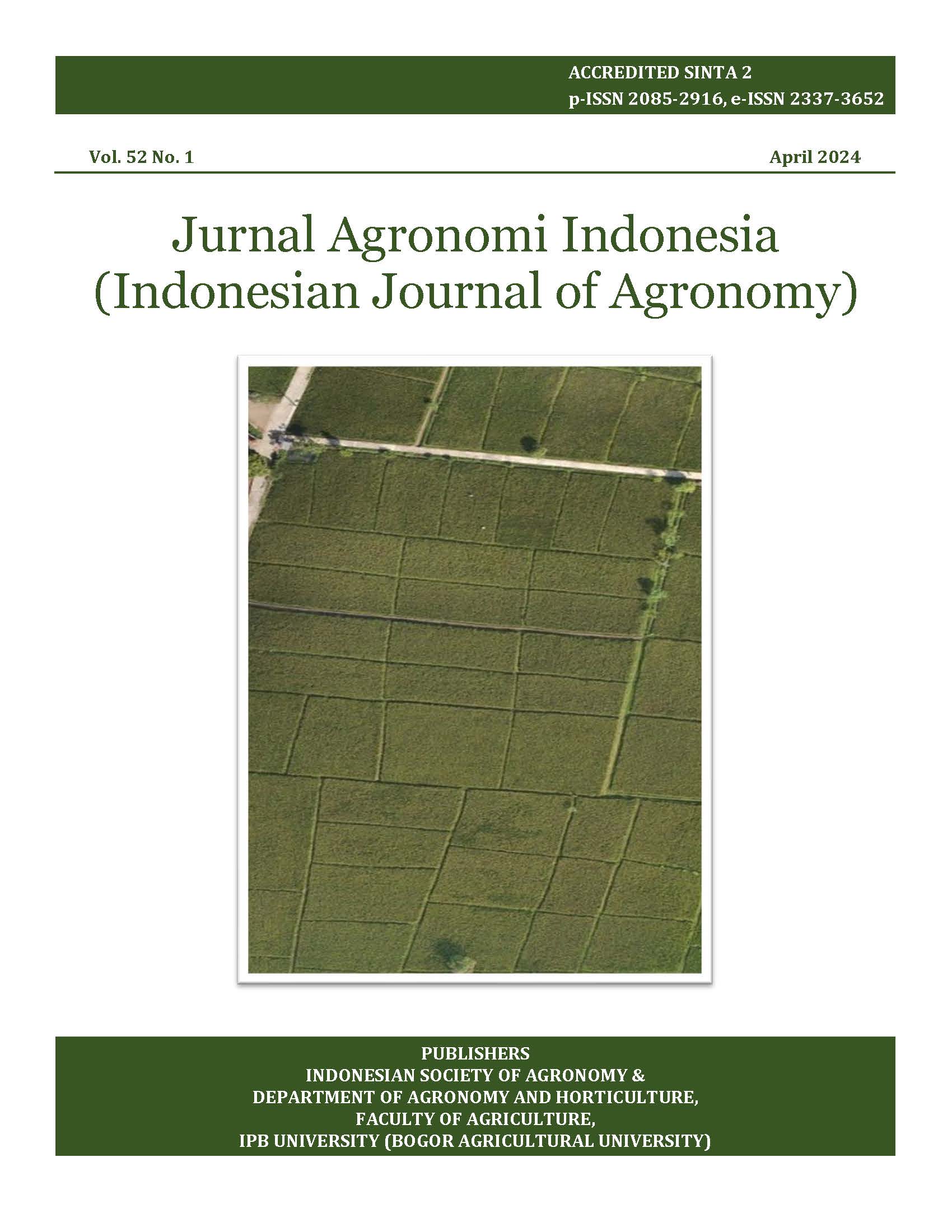Effects of row ratio and plant spacing for enhancing hybrid rice seed production in the tropics
DOI:
https://doi.org/10.24831/jai.v52i1.51380Abstract
The seed yield production determines the success of the development of hybrid rice. Here, an effective and efficient cultivation technology for producing hybrid rice seeds is optimized through spacing and row ratio management. This study aimed to evaluate the effects of spacing and row ratio of restorer (R) : CMS (A) on F1 hybrid rice seed production. The experiment was conducted at the Indonesian Center of Rice Research's experimental field in the dry season of 2016, using parental lines HIPA18 hybrid rice, i.e., CMS: IR79156A line and Restorer: IR53942 line. The experiment was laid out in a strip-plot design replicated three times. Two factors were studied, i.e., plant spacing between CMS lines and row ratio R by A-lines. The results indicated that the highest HIPA18 seed production was obtained from 20 cm x 20 cm spacing of CMS with row ratio 2R:14A, i.e., 3.62 tons ha-1. Plant spacing and row ratio interactions were improved tillers number per plant of restorer and F1 seed yields.
Keywords: A-lines; CMS; F1 hybrid rice; R-lines













